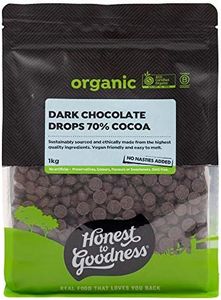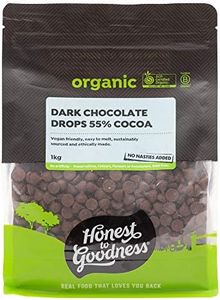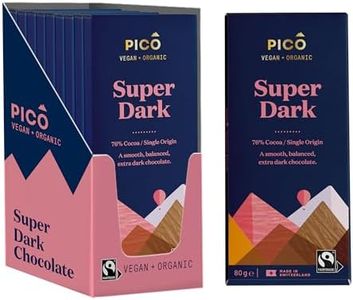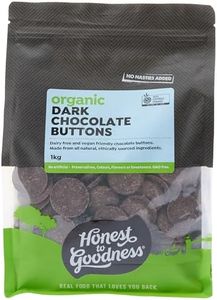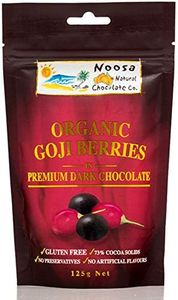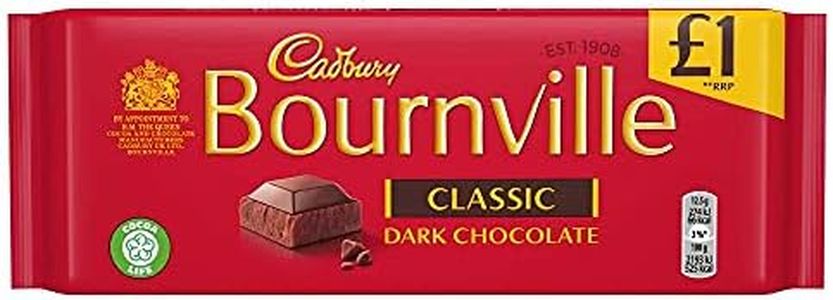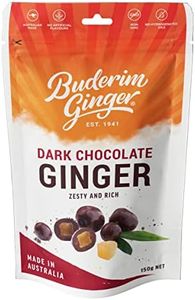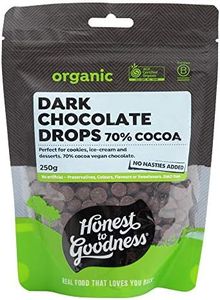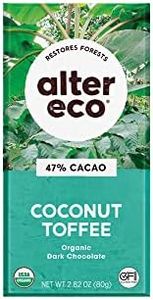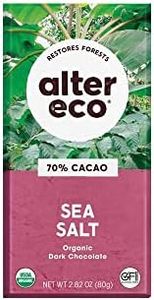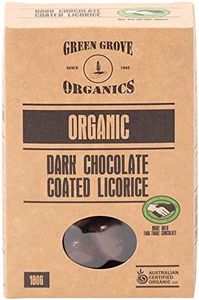We Use CookiesWe use cookies to enhance the security, performance,
functionality and for analytical and promotional activities. By continuing to browse this site you
are agreeing to our privacy policy
10 Best Dark Chocolates
From leading brands and best sellers available on the web.Buying Guide for the Best Dark Chocolates
Choosing the right dark chocolate can be both delightful and a little overwhelming because there are so many options to consider. The best way to shop for dark chocolate is to think about what you enjoy most—whether that's a rich and intense flavor, a hint of sweetness, or even unique add-ins like nuts or fruit. Consider how you plan to enjoy your chocolate too: as a treat with coffee, for baking, or even as a gift. Focusing on a few important qualities will help you narrow down your choices and find the dark chocolate that's just right for you.Cocoa PercentageThe cocoa percentage in dark chocolate tells you how much of the bar is made from cocoa solids and cocoa butter, rather than sugar or other ingredients. This is important because a higher cocoa percentage usually means a more intense chocolate flavor and less sweetness. Generally, bars can range from around 50% to over 90% cocoa. Chocolates below 60% are milder and sweeter, best for those just beginning to enjoy dark chocolate. Options around 70% are well balanced, offering deep flavor with a touch of sweetness, good for everyday snacking. Bars above 80% are richest and most intense, ideal for those who love bold, slightly bitter chocolate. To pick the best for you, consider whether you prefer mild or strong flavors and how much sweetness you enjoy.
Ingredients QualityThe quality and simplicity of ingredients in dark chocolate can make a big difference in both flavor and healthfulness. Look for chocolate with short ingredient lists—often just cacao, cocoa butter, and a sweetener—since fewer additives usually mean a purer taste. Some bars include extra flavors like vanilla, salt, or inclusions like nuts and fruit, which can enhance or detract depending on your preferences. If you value natural or organic foods, check for those labels as well. If you care about taste without unnecessary extras, focus on chocolates with higher quality, minimal ingredients.
Texture and MouthfeelTexture in dark chocolate refers to how the chocolate feels when you eat it—whether it melts smoothly, snaps cleanly when broken, or has a creamy, gritty, or grainy sensation. This matters because a good texture can make eating chocolate more enjoyable. Smooth and creamy chocolates, often due to conching (a process of smoothing chocolate), are great for savoring slowly. If you like a satisfying snap, look for bars described as crisp or firm. Picking the texture comes down to whether you prefer something that melts easily or something with a bit more bite and structure.
Added Flavors and InclusionsMany dark chocolates come with added flavors or ingredients like nuts, dried fruit, sea salt, or spices. These extras can make chocolate more interesting and can pair well with the natural bitterness of dark chocolate. Plain bars are best for people who enjoy the pure taste of cocoa, while those with inclusions are perfect if you like new flavors and textures. Think about whether you prefer your chocolate simple or if you want to try new taste combinations when making your selection.
Ethical SourcingEthical sourcing for dark chocolate means considering how and where the cocoa was grown and if fair trade practices were followed. This can be important if you care about the environment and how workers are treated. Some chocolates are labeled as 'fair trade,' 'organic,' or 'rainforest alliance certified,' which means the producers aim to support farmers and protect nature. If these values matter to you, look for logos or notes about ethical sourcing on the packaging.
